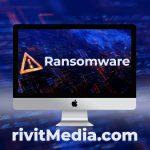In the realm of cybersecurity, the ever-evolving landscape witnesses the rise of various threats, one of which is the cunning 1PzZ3jX1zrGov2qyrMB8x3fKCrfxvTU2Tx Trojan. This article aims to unravel the intricacies of this malware, elucidate its potential consequences, and empower users with knowledge on prevention and removal practices.
1PzZ3jX1zrGov2qyrMB8x3fKCrfxvTU2Tx has been identified as a Trojan with a primary focus on phishing through deceptive email campaigns. While users may receive alarming messages threatening exposure of sensitive information, it’s crucial to understand the bluff behind these tactics.
Actions and Consequences
Phishing Email Campaigns
The Trojan operates by orchestrating phishing email campaigns, exploiting fear and intimidation to coerce users into transferring funds. The deceptive emails often claim unauthorized access to the user’s devices, recording of internet activities, and threats of exposing compromising content.
Email Content
Typically, users receive emails with subjects implying overdue payments or urgent matters requiring immediate attention. The content alleges a breach of security, detailing a sequence of events leading to the installation of a Trojan on the user’s operating systems.
False Claims
The Trojan falsely asserts control over the user’s devices, alleging the ability to access cameras, keyboards, microphones, and other controllers. Threats of publicly sharing compromising videos and personal data are employed to create a sense of urgency and fear.
Detection Names
Multiple antivirus programs have identified the Trojan using the 1PzZ3jX1zrGov2qyrMB8x3fKCrfxvTU2Tx Bitcoin Wallet. Detection names include Avast (FileRepMalware [Misc]), BitDefender (Gen:Variant.Application.Agent.183), Emsisoft (Gen:Variant.Application.Agent.183 (B)), Kaspersky (Not-a-virus:HEUR:AdWare.Win32.WebCompanion.gen), Symantec (PUA.Gen.2), and more.
Similar Threats
- Drive-by Exploit: A common threat where malware is automatically downloaded to a user’s computer without their knowledge or consent, often through visiting compromised websites.
- Save Yourself Ransomware: A type of ransomware that encrypts files on the victim’s computer, demanding a ransom payment for their release.
Removal Guide
Swift action is imperative to neutralize the threat posed by 1PzZ3jX1zrGov2qyrMB8x3fKCrfxvTU2Tx. Follow these steps for effective removal:
- Ignore and Delete Email: Do not respond to the phishing email. Delete it promptly to avoid falling victim to false threats.
- Antivirus Scan: Conduct a thorough antivirus scan using reputable security software to detect and remove any traces of the Trojan.
Best Practices for Prevention
- Email Vigilance: Exercise caution with unsolicited emails. Be skeptical of alarming messages and avoid clicking on suspicious links or attachments.
- Regular Updates: Keep your operating system, antivirus software, and other applications up to date to benefit from the latest security patches.
- Educate Users: Promote awareness among users about common phishing tactics, emphasizing the importance of verifying the legitimacy of unexpected emails.
- Backup Data: Regularly backup important data to mitigate the impact of potential ransomware attacks.
By staying informed, adopting a proactive approach, and following best practices, users can fortify their defenses against threats like 1PzZ3jX1zrGov2qyrMB8x3fKCrfxvTU2Tx, ensuring a more secure digital environment.





